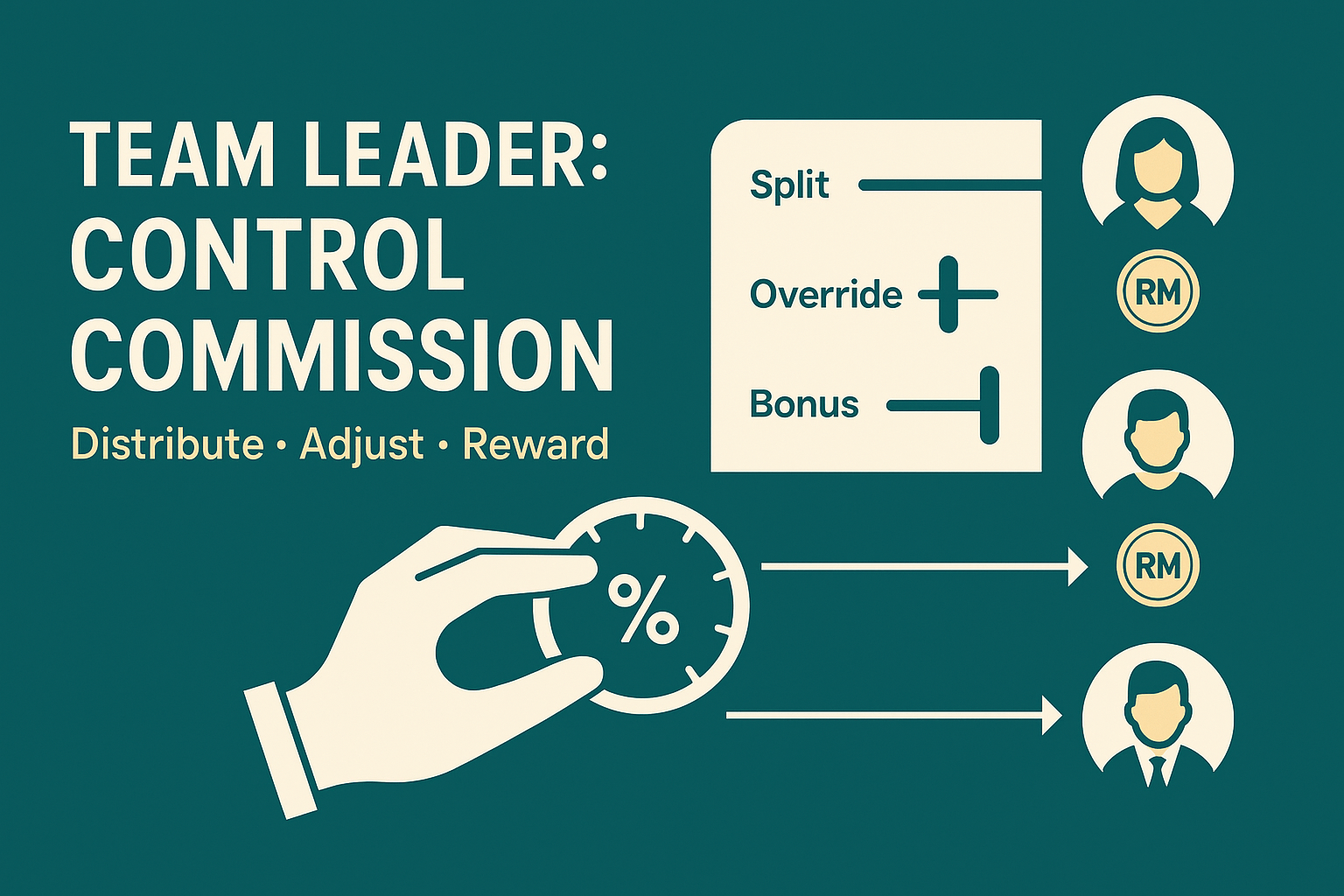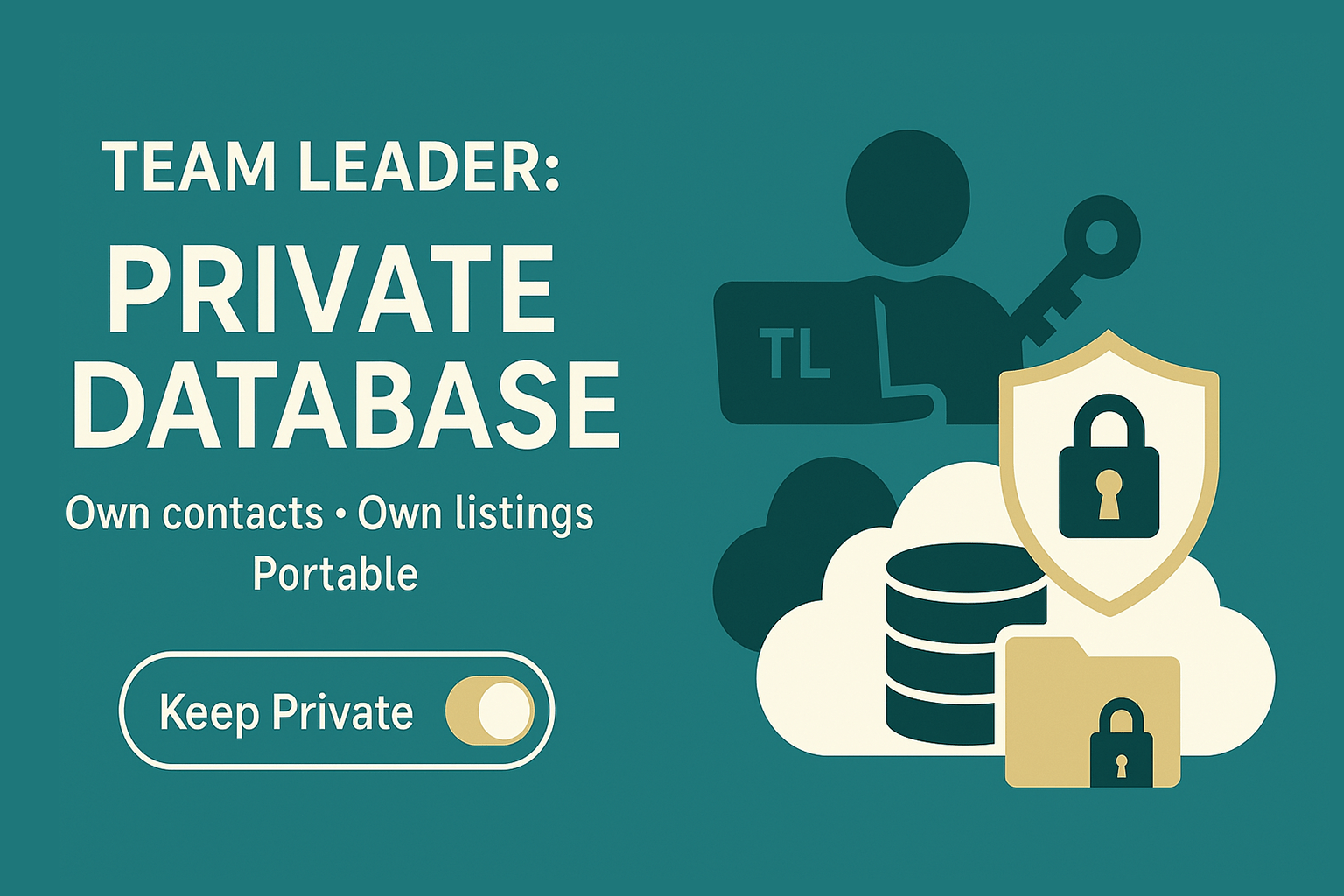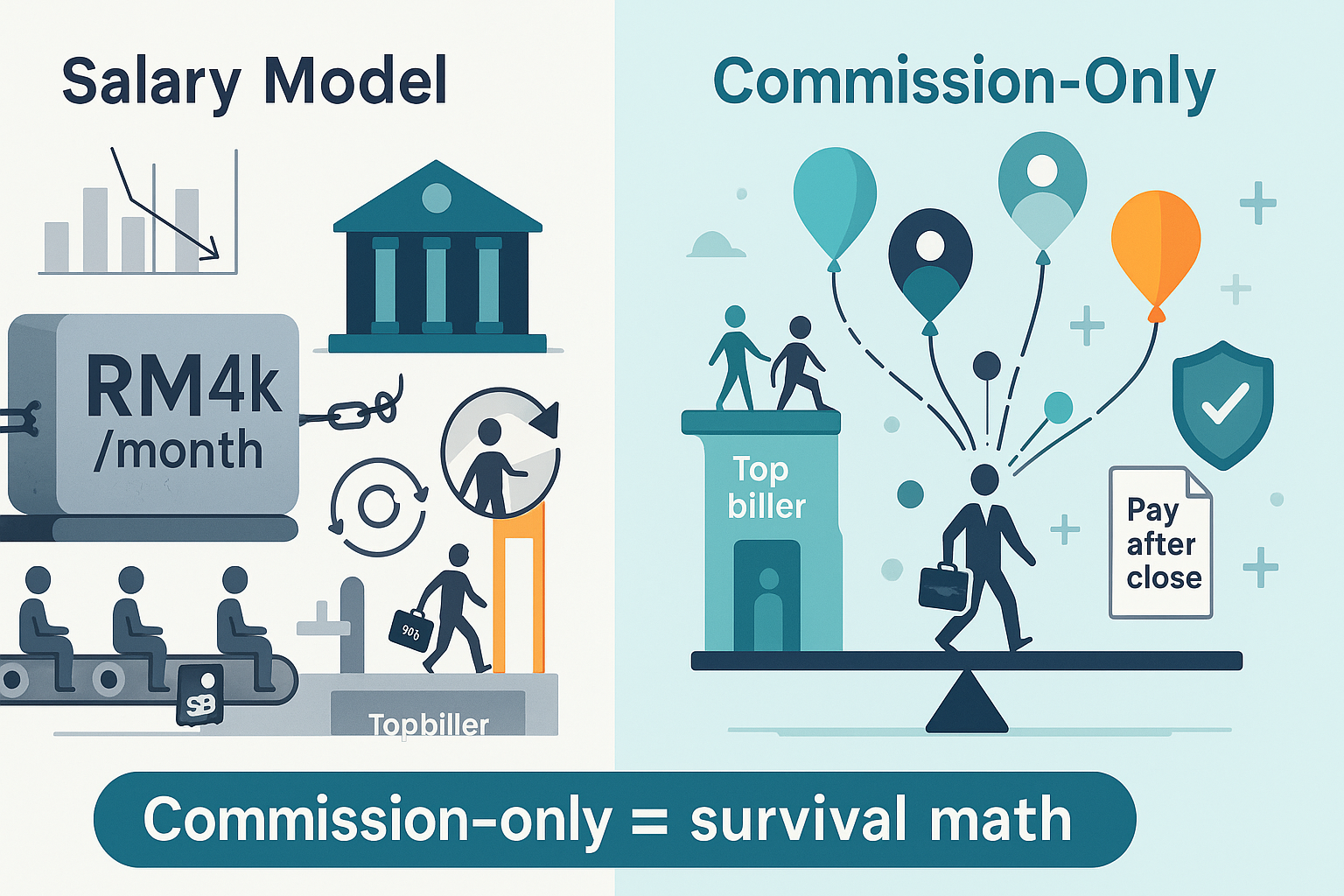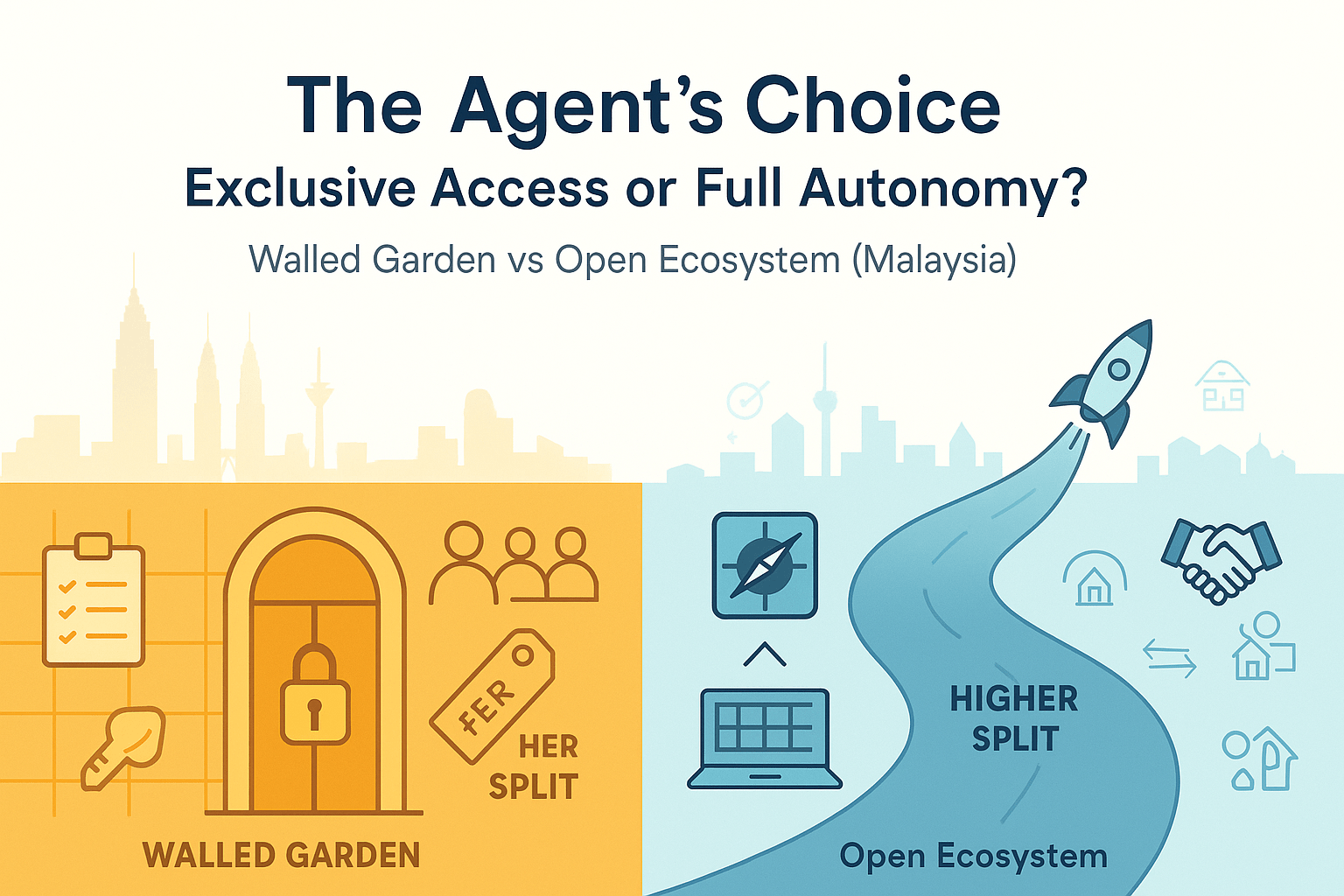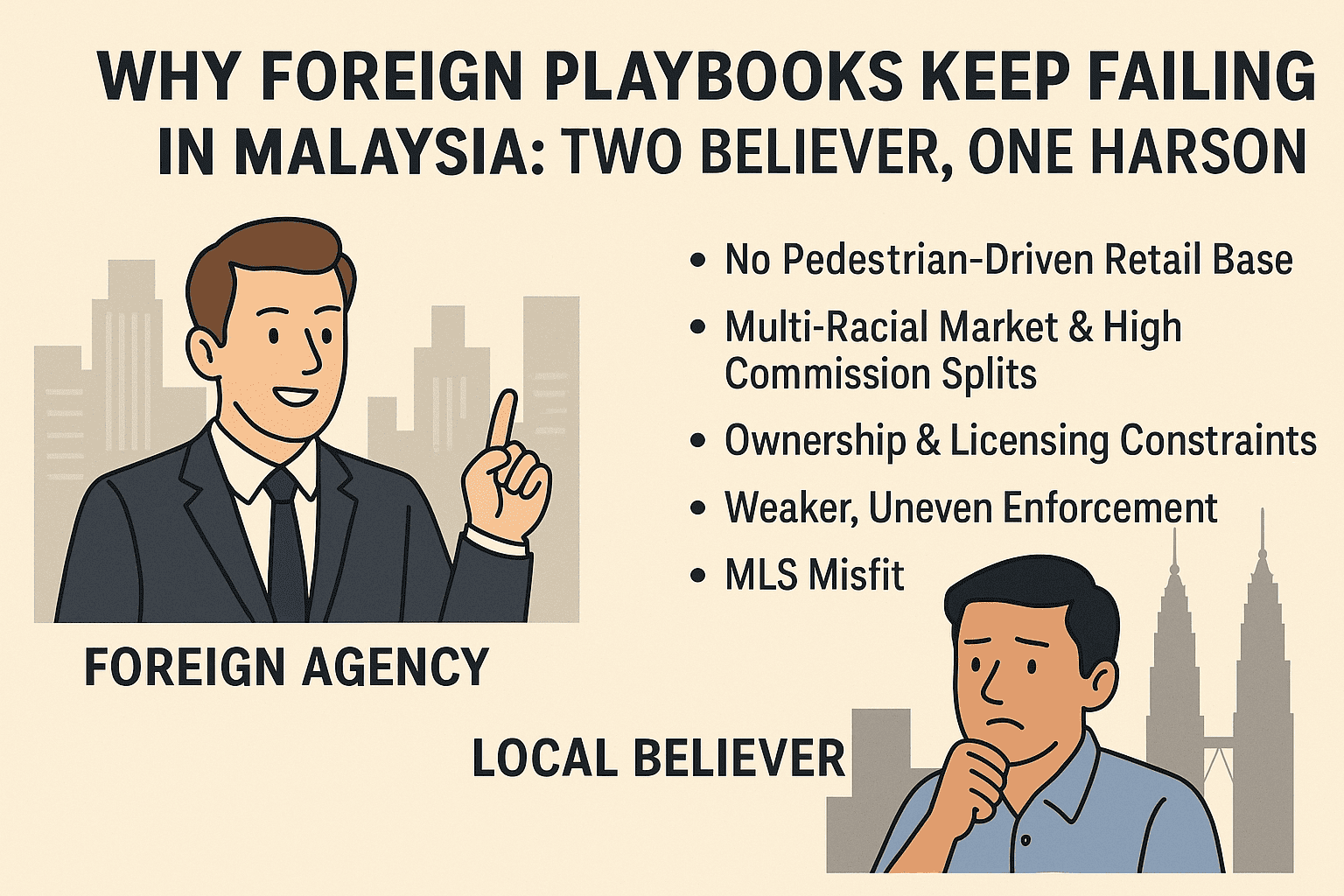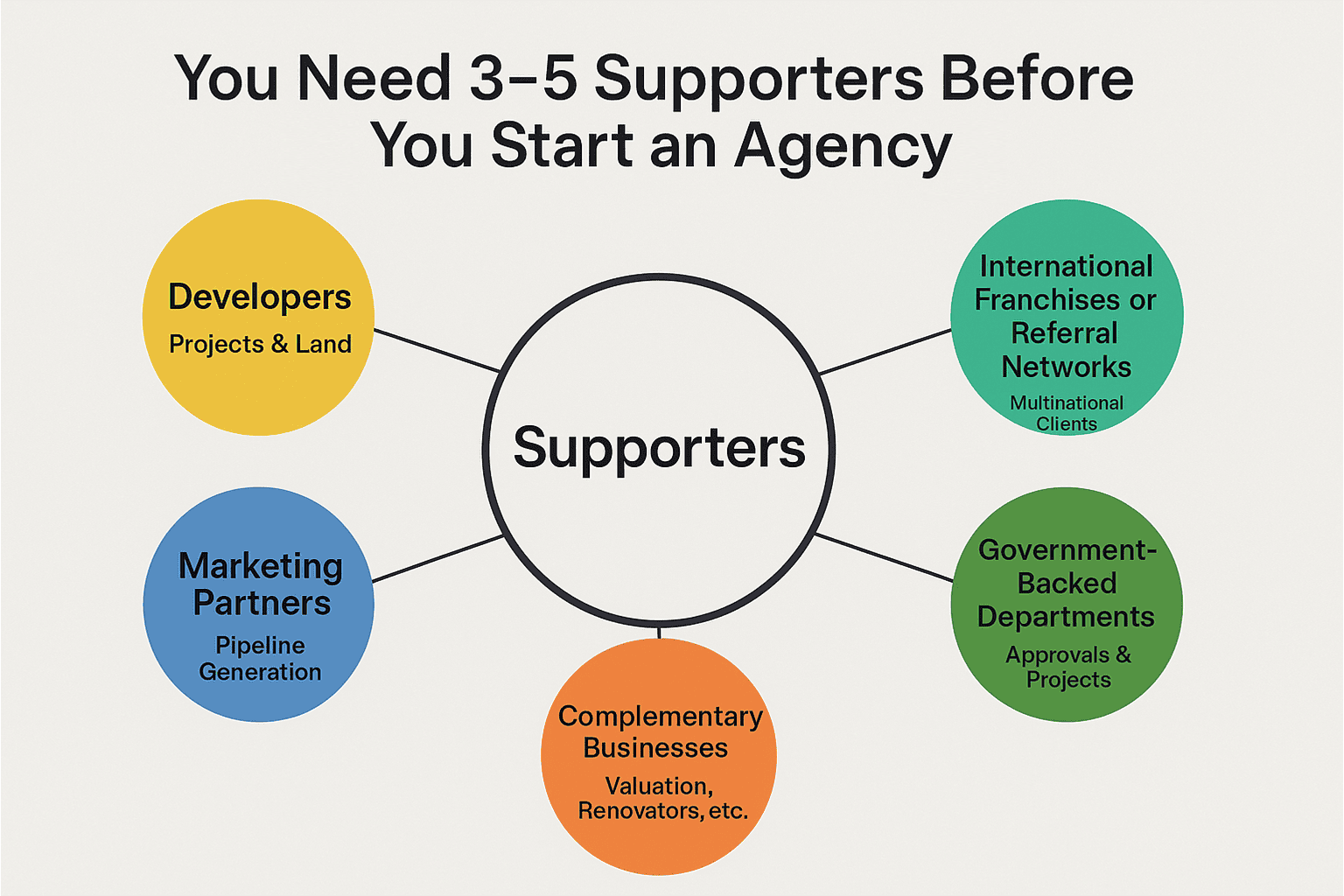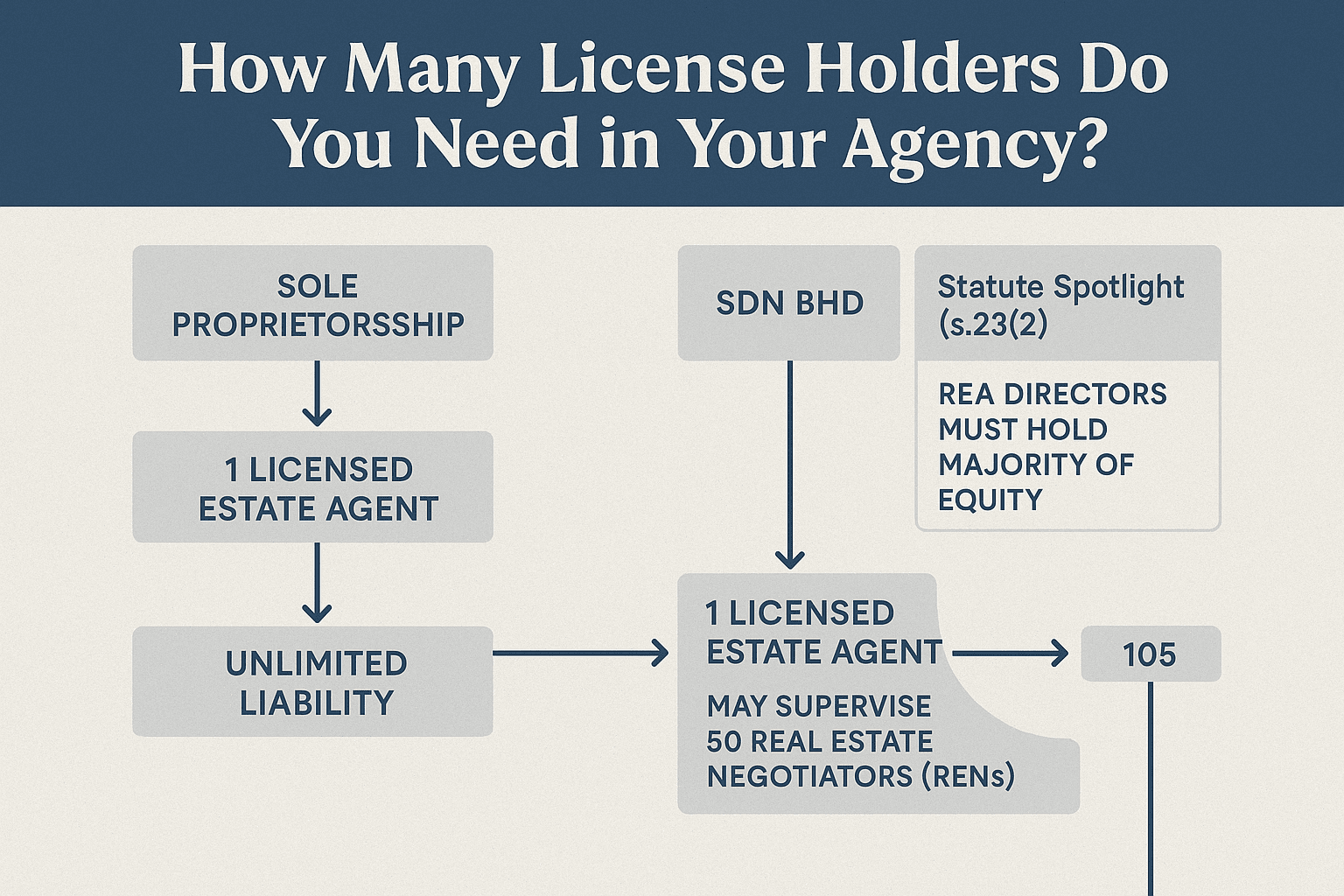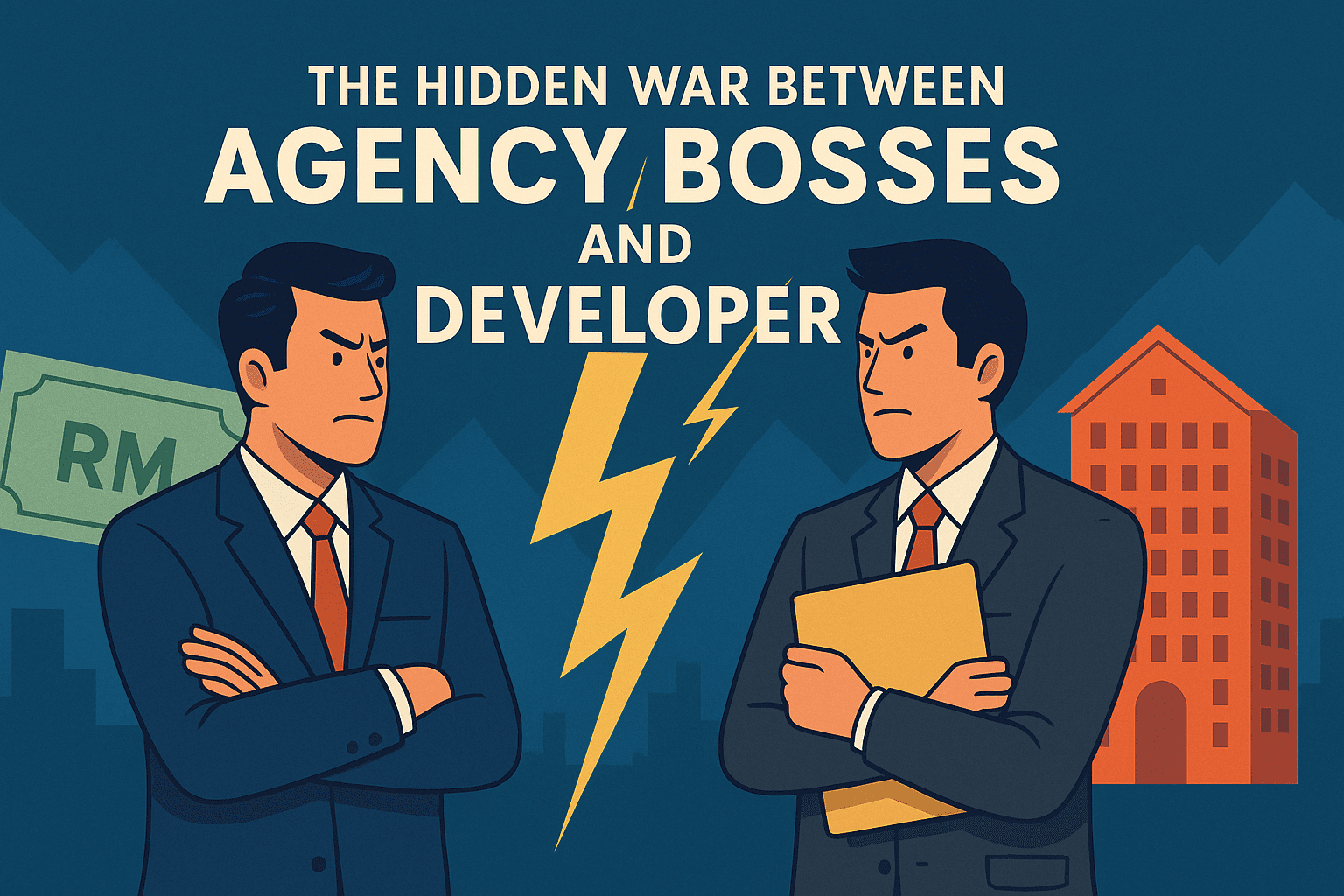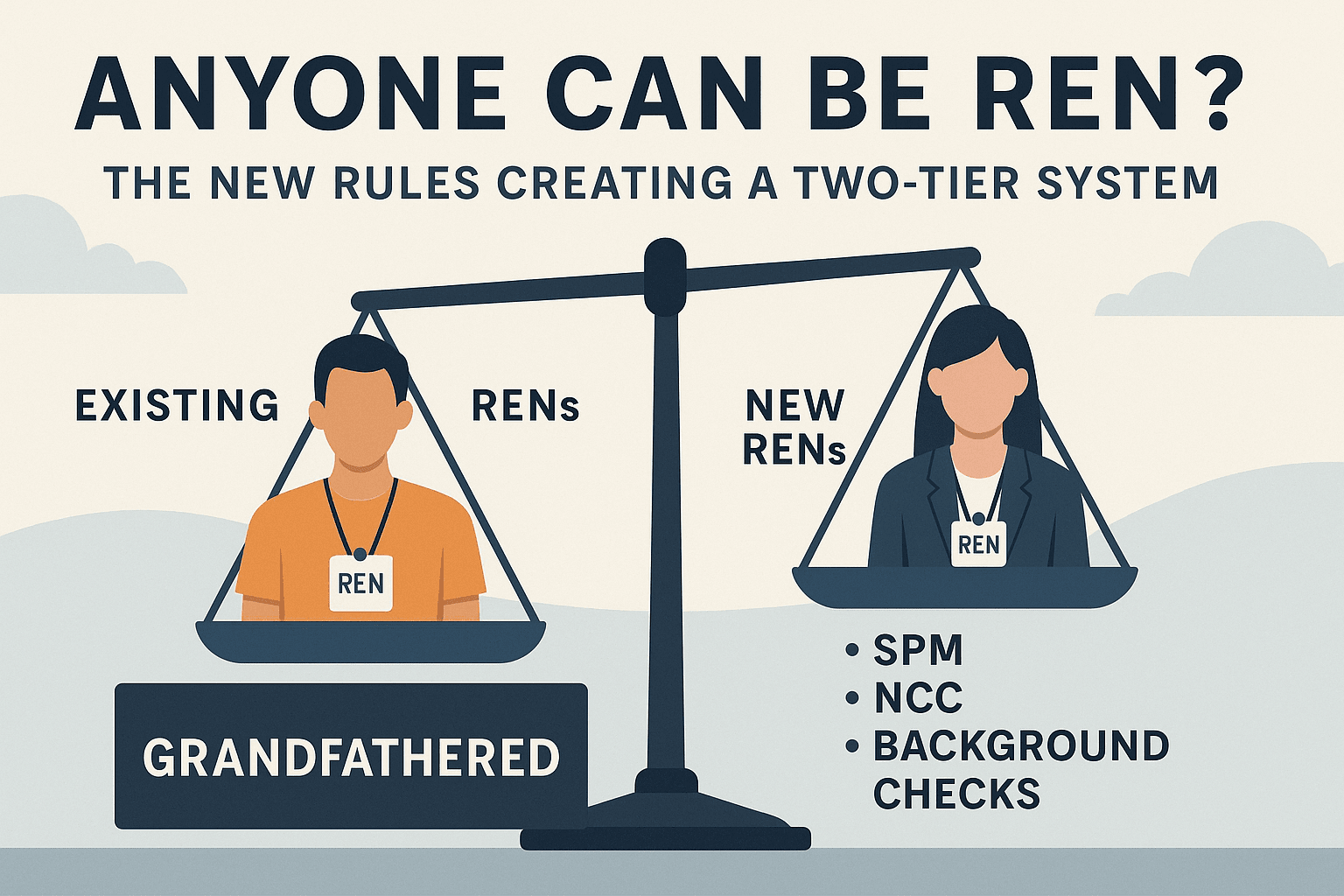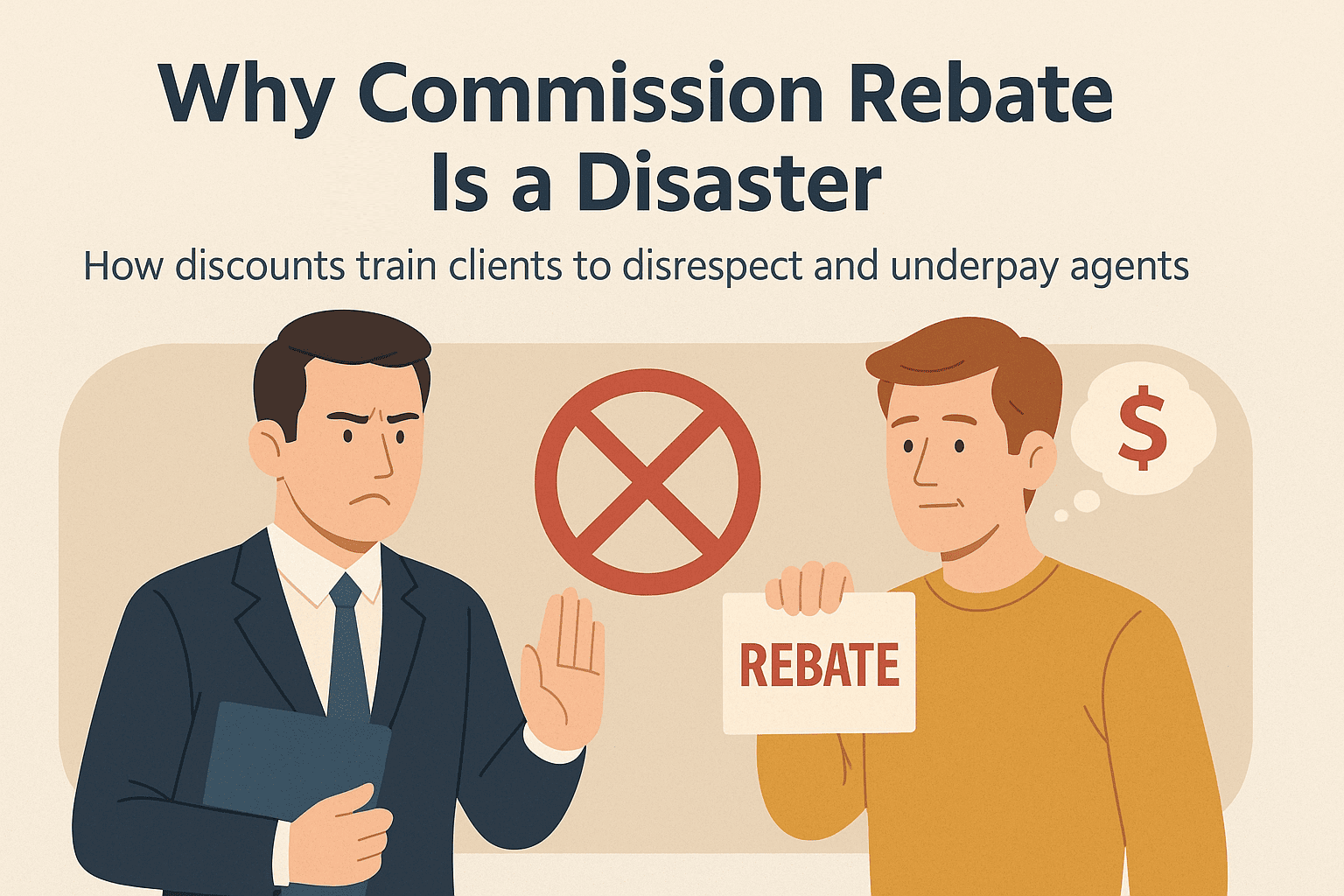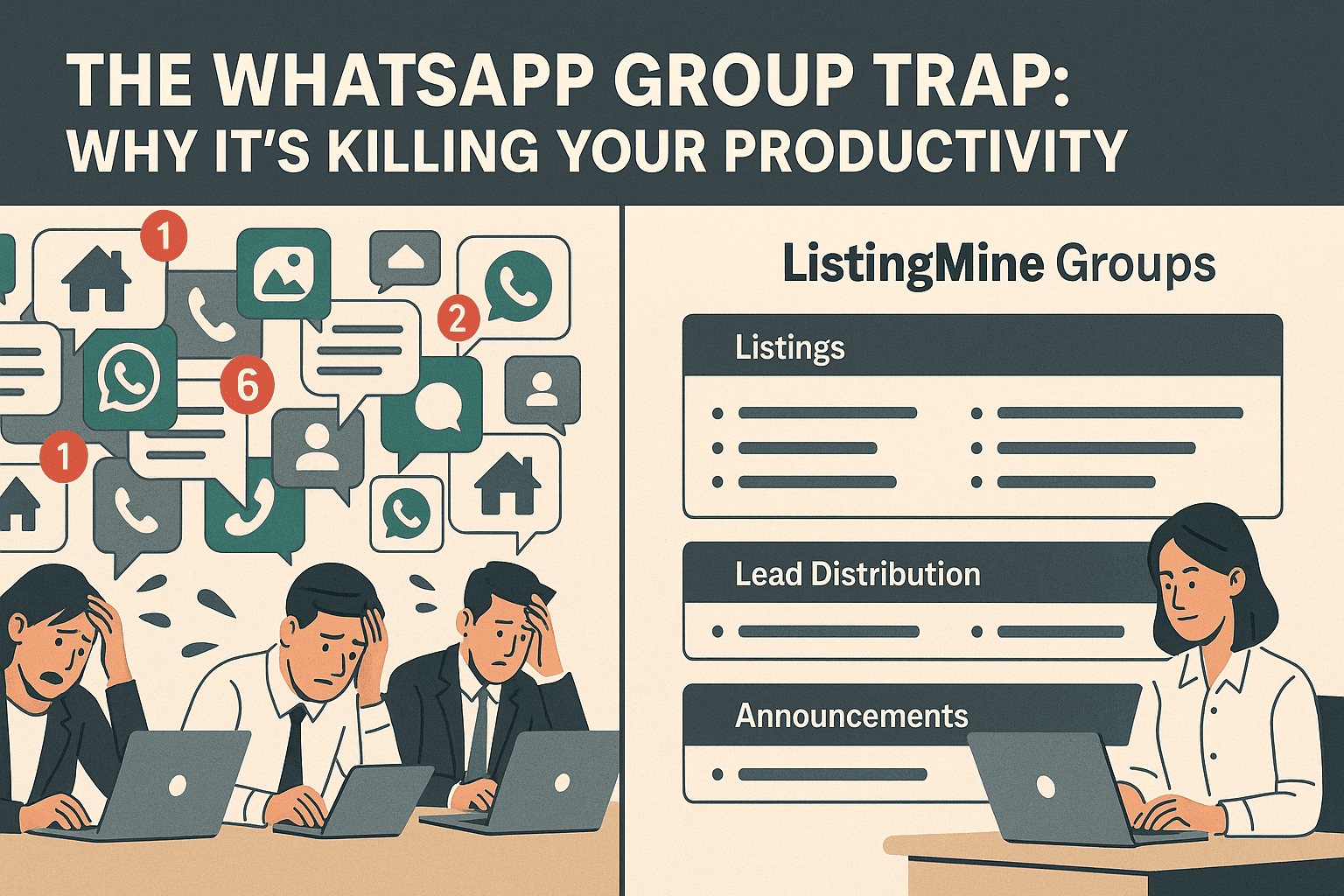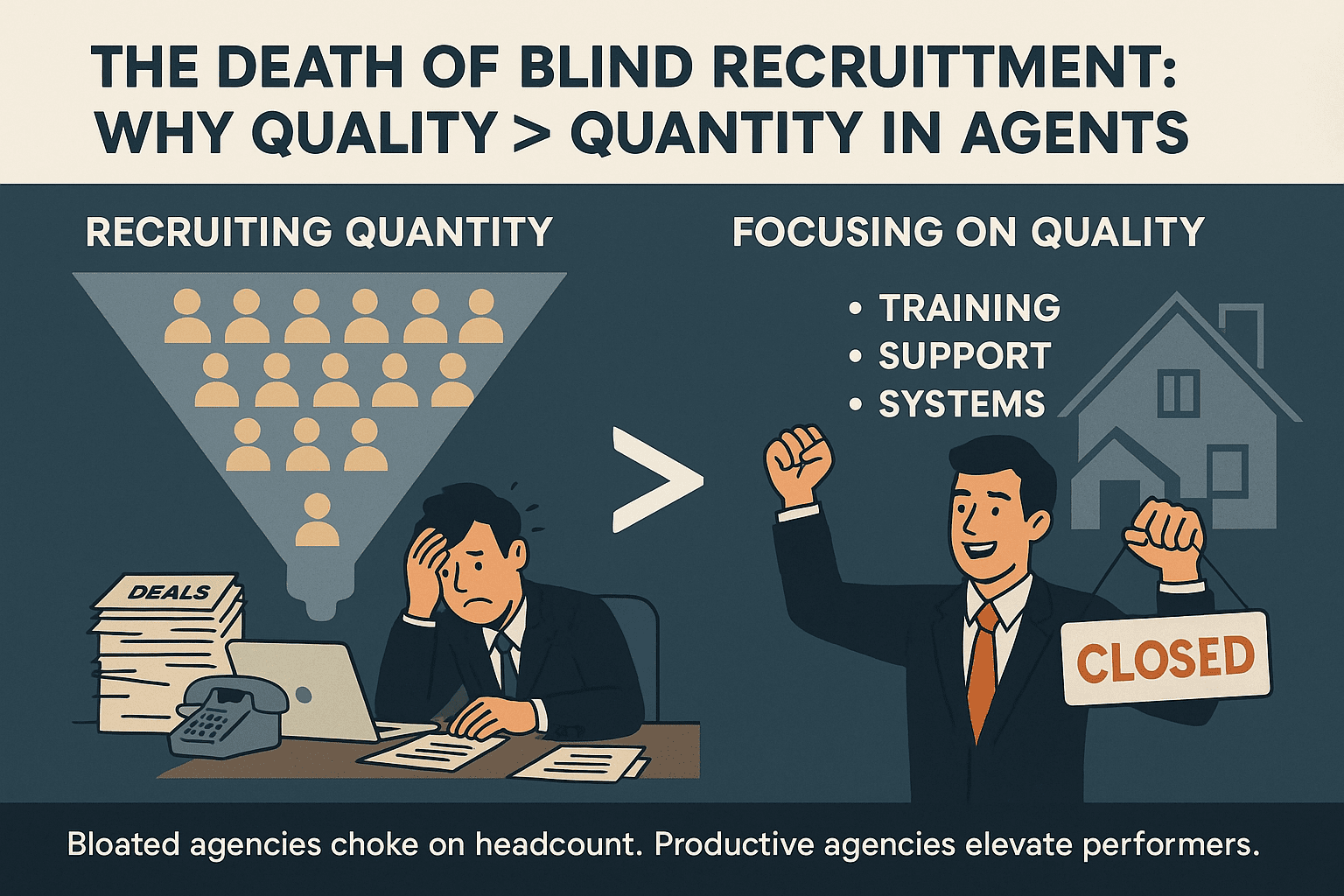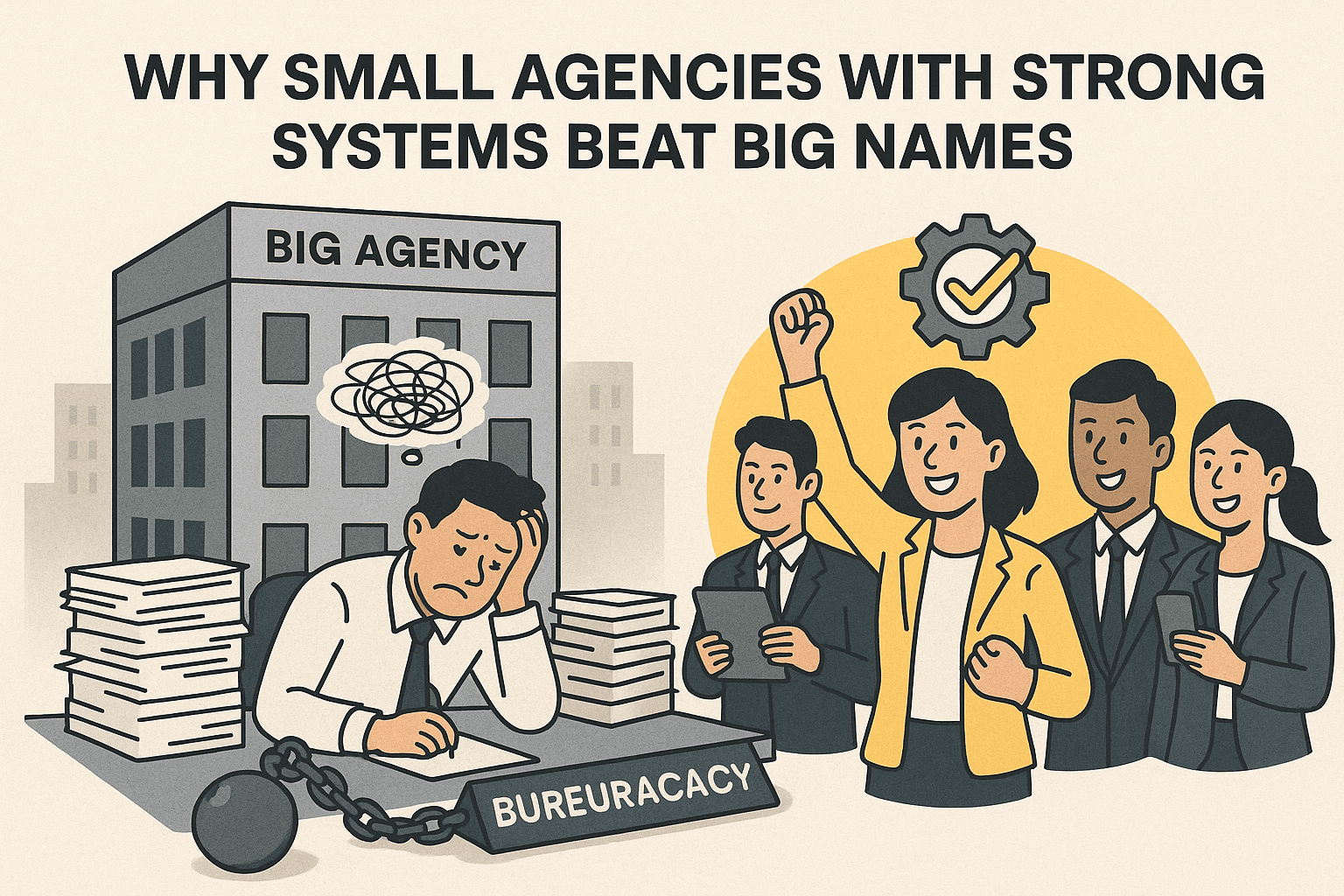The 40% Commission Dilemma: A Rule That Blocks Talent, Technology, and Tomorrow
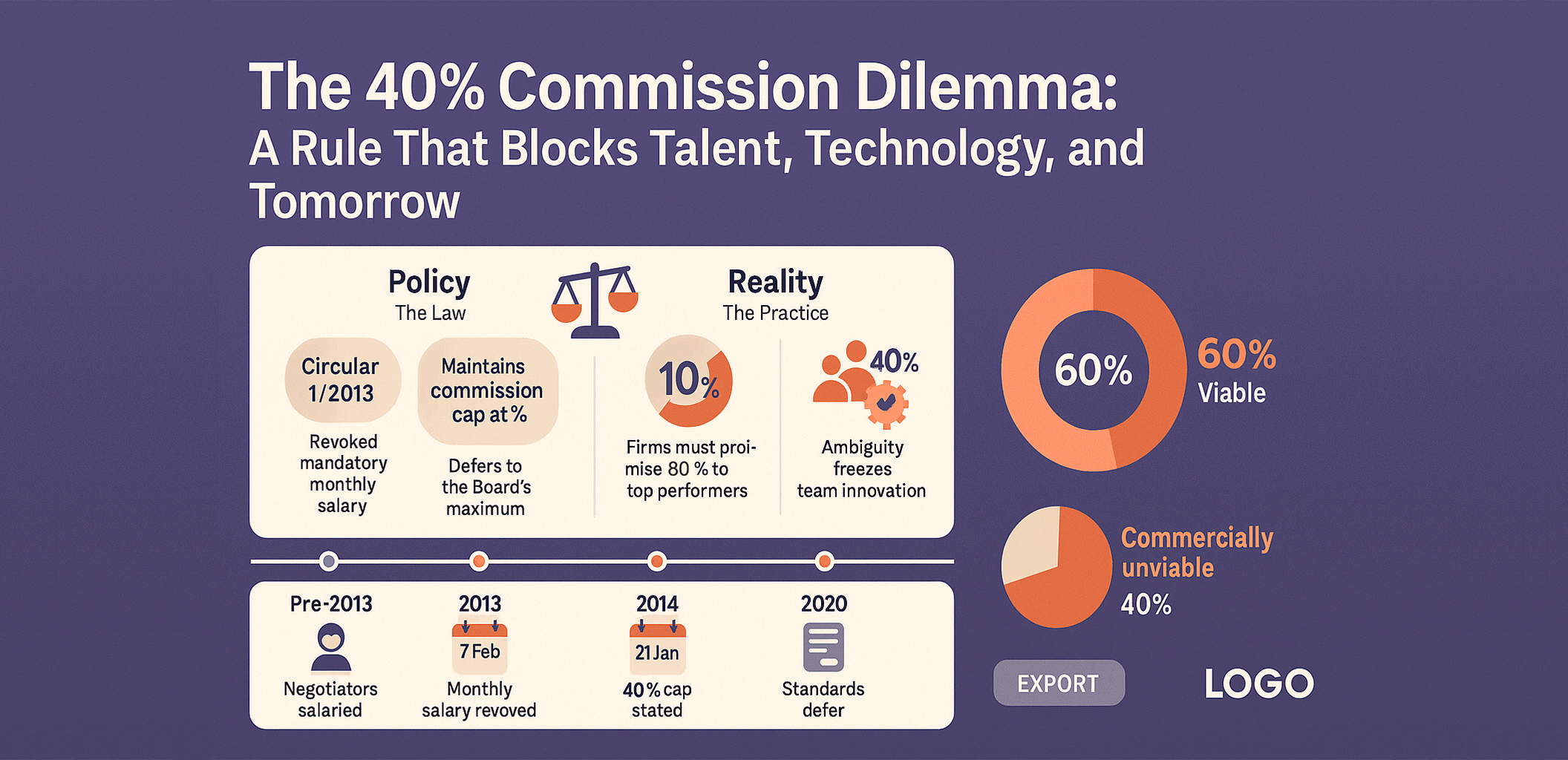
Intent: partnership, not provocation. The Board’s 40% guidepost and MEAS have lifted standards and protected clients. As the market shifted to contract-for-services negotiators, we now need clear definitions so firms can keep meeting those same objectives—with modern, auditable structures.
Disclaimer: This article supports LPPEH/BOVAEP’s aims of client protection, governance, and transparent remuneration. It highlights where concise clarifications—especially on the scope of the 40% and what constitutes “commission in substance”—would help agencies innovate responsibly while upholding the Board’s standards.
In short, a rule designed for salaried employees is creating ambiguity in a contractor-dominated market, hindering innovation and professionalization.
Executive Summary: Policy vs. Reality
The official guidance says a real estate negotiator’s (REN) commission is 40%. In today’s contractor-dominant market, that single number is commercially unviable for most independent contractors. Agencies often need 60–90% headlines (via lawful structuring—for example, defining a “side” of a deal and paying a high percentage of that portion) to recruit and survive.
| Policy on Record (The Law) | Market Reality (The Practice) |
|---|---|
| Circular 1/2013 revoked the mandatory monthly salary; employee or contractor models permitted. | The market moved largely to independent contractors. |
| Circular 1/2014 maintains the 40% commission position. | Firms signal 60–90% agent “headline” via lawful structuring (e.g., side/role framing as defined above), periodic incentives, and centralised costs. |
| MEAS 3rd Edition (2020) refers to the Board’s maximum. | Ambiguity around what counts as “commission” creates uncertainty, slowing team design and technology adoption. |
1) How We Got Here: The Policy Timeline
- Pre-2013: Negotiators commonly salaried; passing a modest fee share made sense because firms carried payroll risk.
- 7 Feb 2013 — Circular 1/2013: Mandatory salary revoked; firms may engage RENs as employees or independent contractors.
- 21 Jan 2014 — Circular 1/2014: Commission payable to negotiators is still 40%.
- 2020 — MEAS 3rd Edition: No fixed %; defers to the Board.
Net effect: The market shifted to contract-for-services, yet the only clear numeric left in public view is 40%—a number conceived for a world that assumed salaries.
2) Where Ambiguity Creates Daily Uncertainty
- What is “commission”? If a payout’s amount or timing depends on a specific transaction, it may be read as commission in substance, even when labelled “bonus” or “incentive.”
- Per-REN or aggregate? The circular text doesn’t state whether 40% applies per negotiator or to all negotiators combined on a deal.
- Market collision: A rigid per-deal ceiling, without bright lines, collides with contractor-market recruitment where 60–90% headlines are commonplace.
Current Market Adaptations (the direct consequence of ambiguity)
- Commission + periodic incentives: Keep deal-linked commission entries at/under ~40%; use periodic, KPI-based incentives (not tied to a single deal) for the rest.
- Risk: If an “incentive” is deal-pegged, it may be re-characterised as commission in substance.
- “% of side/role” framing (clarified): Pay a high % of the agent’s side/role while ensuring the effective vs. total stays ≤40% on the commission line for each deal.
- Example: 80% of a 50% side = 40% of total, yielding a competitive headline and a defensible commission entry.
- Centralised costs: The firm absorbs portals, ads, TC, and compliance tooling so a recorded ≈40% commission can feel like 80–90% net to the agent.
3) Commission Design Is Architecture, Not Accounting
Modern schemes are modular systems of overrides, each solving a management need:
| Override Type | Management Purpose | Example |
|---|---|---|
| Recruitment Override | Incentivise network growth | Reward a sponsor who brings new talent |
| Designation Override | Recognise leadership & accountability | Pay team leaders for supervision |
| Verifier / Checker Fee | Maintain QC, AMLA & PDPA hygiene | Reward seniors who vet documents |
| Loyalty / Retention | Reduce churn, stabilise teams | Deferred / tenure-based incentives |
Without clarity, leaders either under-pay critical roles or re-label them as “bonuses.” Both distort behaviour and invite disputes.
4) Technology & Training: Why Systems Break
- Resignation redistribution: Where do uplines’ overrides go when a leader leaves?
- Missing-tier logic: Who receives a “gap” when a middle layer doesn’t exist?
- KPI gating: Unlock by SPA date, fee receipt, or value?
- Tax/SST handling: Who bears indirect taxes across multi-layer flows?
Without bright lines on commission vs. bonus, ERPs can’t enforce policy confidently. Teams fall back to spreadsheets and exceptions—the opposite of professionalism.
The curriculum gap
We teach Act 242, ethics, and client accounts—but not commission system design or co-broking architecture. Each policy choice produces a different culture and P&L, yet there’s no shared academic foundation.
5) Role-Based Agent Cooperation Network (ACN): Professionalising Collaboration with Clarity
Why ACN matters now (and didn’t 20 years ago):
Today’s agents must be specialists in multiple domains that barely existed at scale two decades ago—digital lead gen & ads, CRM/automation, video & VR tours, data/price analytics, AMLA/PDPA hygiene, loan structuring, negotiation science, developer campaign ops. No single REN can excel at all of it on every deal. Real performance comes from roles working in concert.
ACN turns cooperation into a system: predefined roles, event proofs, and pre-declared split tables.
- Listing Input / Maintainer (inventory accuracy, updates)
- On-site Verifier / Photographer (quality control)
- Authorization Docs Collector / Key Holder (readiness)
- Buyer Referrer / First-Viewing Agent / Closer (sales funnel)
- Transaction & Finance Advisor (documentation, loan)
Event proofs: first-viewing timestamps, QC approvals, document checklists, offer-letter logs.
Default split logic: publish a role table with variance bands; if a role is unused, auto-rebalance; lock the split pre-payout in the ERP.
What blocks ACN today:
Ambiguity around the 40% and “commission in substance.” Leaders fear that paying multiple roles may be re-characterised, so they revert to informal arrangements—slower closings, more disputes, weaker audit trails.
What a Board clarification/FAQ could state (illustrative):
- Scope: Whether the 40% applies to the aggregate commission to RENs per transaction (or per-REN, if that’s the intent).
- Definition: Any payment that varies with, or is triggered by, a specific transaction is commission; periodic, KPI-based payments not tied to a single deal are bonuses/allowances.
- Worked examples: At 50/50 sides, paying 80% of a side = 40% of total (within the cap). Multiple roles can be paid from the same REN pool with event proofs.
Benefits to the Board’s mission: clearer governance, fewer complaints, faster and cleaner closings—and ERPs that enforce rules instead of working around them.
Bottom Line
Policy on record: Contract-for-services permitted since 2013; 40% to negotiators remains the stated position (2014).
Practice: To recruit and retain talent, firms create an agent experience well above 40% via side/role framing, periodic (non-deal) instruments, and centralised costs, while keeping deal-linked entries aligned with the 40% guidepost.
Next step: Small clarifications would unlock specialisation, enable ACN, and deliver faster, cleaner deals—without compromising client protection.




